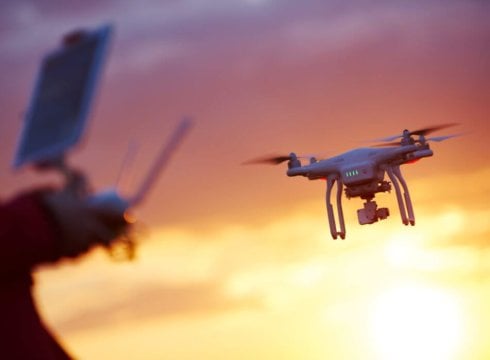SUMMARY
The Civil Aviation Ministry Is In The Process Of Finalising A Set Of Guidelines For Smooth Operations Of Drones
Inc42 Daily Brief
Stay Ahead With Daily News & Analysis on India’s Tech & Startup Economy
The Minister of State for Civil Aviation, Jayant Sinha, has announced that the government is looking to put into effect the concept of ‘digital sky” for smooth, uninterrupted operations of drones.
At a consultation event organised by the Directorate General of Civil Aviation (DGCA) for finalising the guidelines on drone usage, Jayant Sinha stated, “Increasingly the way in which people are thinking about the use of unmanned aerial vehicles (UAVs) is that you create a digital space where every point in that 3-D digital space is mapped out.”
“When someone wants to operate a drone, they will have to file a digital flight plan and through a software monitoring programme and ground radars you ensure that the digital flight plan is faithfully followed,” Sinha said, adding that the fast-increasing number of drones in the country has made digitisation crucial.
During the event, industry representatives and stakeholders voted in favour of a single-window clearance system for drones. Apart from that, they called for a revision of the height limit set by the government on the flying of UAVs as well as a proper mechanism for retrieving and punishing rogue drones.
Other suggestions made during the consultation event include proper training of pilots, efficient handling of emergencies, etc. According to sources, Sinha was also asked to shed light on the guidelines for ensuring that drone pilots are medically fit to operate the contraptions.
“While the public consultation process is on, we get lots of comments from different segments of the aviation sector. We will take those into consideration and we will see how best to handle those concerns,” concluded Jayant Sinha.
A Look At The Draft Policy On Drones
The development comes three weeks after the Civil Aviation Ministry issued a draft stating the rules and guidelines pertaining to the use of drones. At the time, the Directorate General of Civil Aviation posted a draft of rules in the public domain to seek comments and suggestions through their website.
Once the policy is finalised and implemented, Sinha believes that India could witness the use of UAVs for commercial purposes such as the delivery of ecommerce packages to customers doorsteps.
R N Choubey, Secretary, Civil Aviation had stated during the announcement, “Drones are very dynamic, these rules will allow companies to deliver goods via drones to their customers provided they follow the norms. Both the aviation ministers wanted drones to be open for all to use, including businesses. The final policy on drones may be out by the end of this year as the draft gives 30 days for inviting public comments which are then evaluated.”
Under the proposed norms for regulation, the ministry has categorised the drones on the basis of weight. Nano drones that weigh below 250 grams and are not equipped to fly more than 50 feet above the ground level have been exempted from licensing and permission formalities.
Unmanned aerial vehicles that weigh more than 250 grams, on the other hand, have been classified into four other categories based on weight: 250 gm to 2 Kg, 2kg to 25 kg, 25 kg to 150 kg and above 150 kg.
As per the Civil Aviation Ministry, no formal permissions from police will be required for using UAVs, which can fly not more than 200 ft and weigh above the 250 gm up to 2kg. Except for Nano drones and the ones operated by security agencies, all drones falling under the other four categories will be required to be registered with the DGCA for the purpose of allotment of unique identification. In addition, formal police permission along with legal licence and flight plan have been made mandatory prior to their use.
As stated by Jayant Sinha, there will also be restrictions on operating drones in sensitive areas and high-security places such as in and around India Gate and the Parliament. Besides, there are restrictions to fly drones around international borders along with eco-sensitive zones like national parks and wildlife sanctuaries.
Limitations have also been imposed on operations of drones within 500 m from strategic locations and mobile platforms including car, ship or an aircraft. The framework also suggests that government agencies are free to use drones according to their own set of guidelines and are not governed by the Civil Aviation Ministry’s regulation guidelines.
One sector that could benefit greatly from the widespread use of drones is ecommerce. Consequently, major ecommerce firms in the country are already gearing up to employ unmanned aerial vehicles for their services. Last month, Amazon filed a patent to introduce drones in India for delivery services. The company filed a patent for exclusive rights on multi-scale fiducials, which are black and white markings on objects for unmanned aerial vehicles to identify them from a distance. In December last year, Mumbai-based UAV manufacturer ideaForge raised $10 Mn (INR 70 Cr) Series A funding from WRV Capital, IndusAge Partners and Infosys Innovation Fund. Once the government implements a policy on drone usage, it will likely offer the sector a major push, as predicted by Jayant Sinha.
Note: We at Inc42 take our ethics very seriously. More information about it can be found here.


